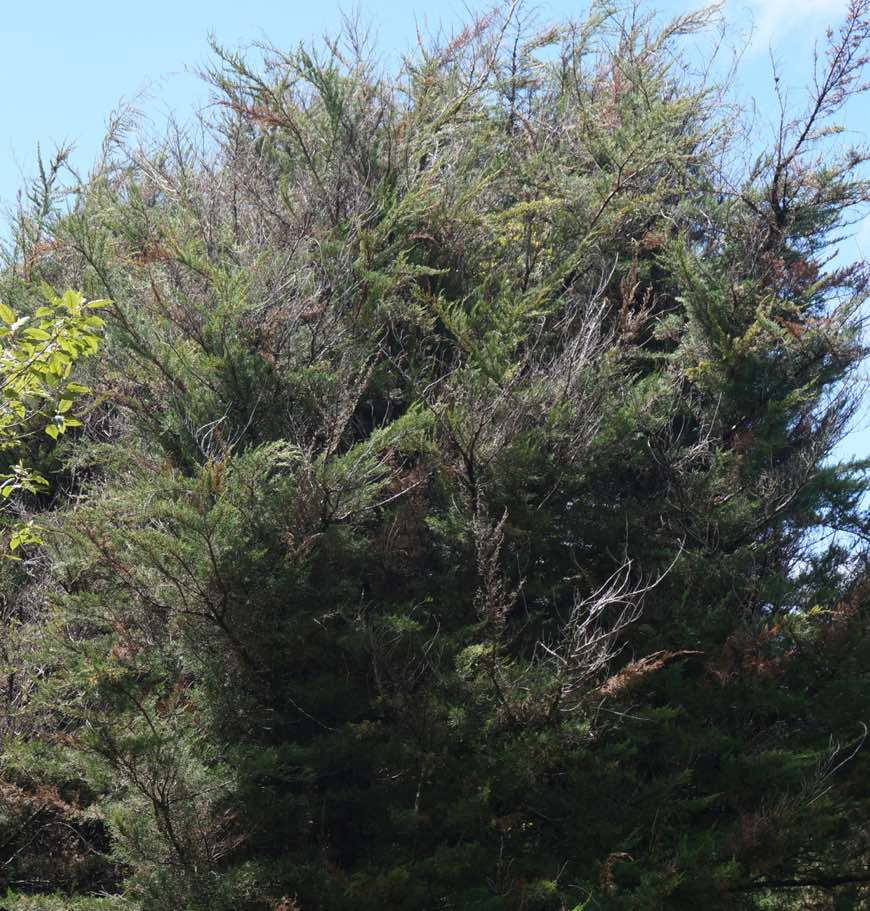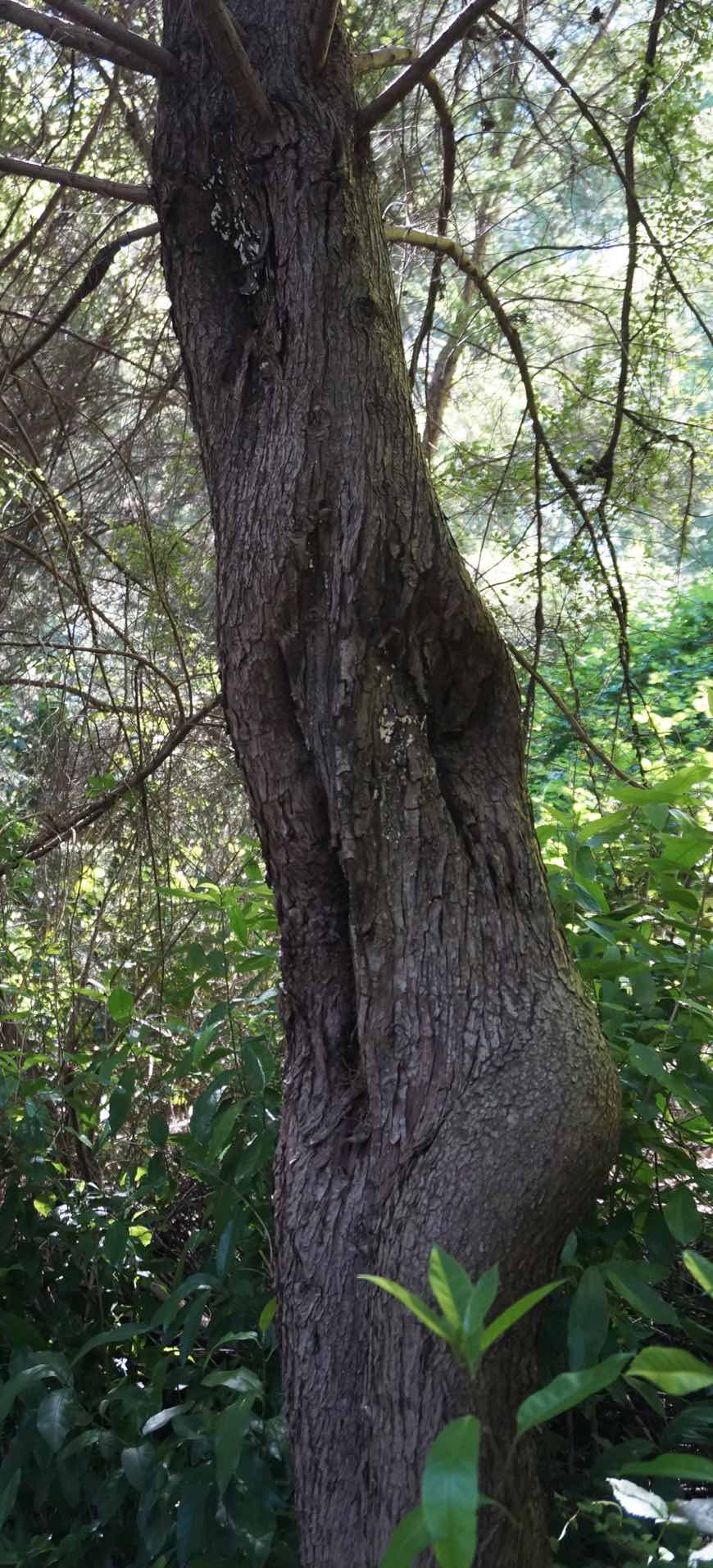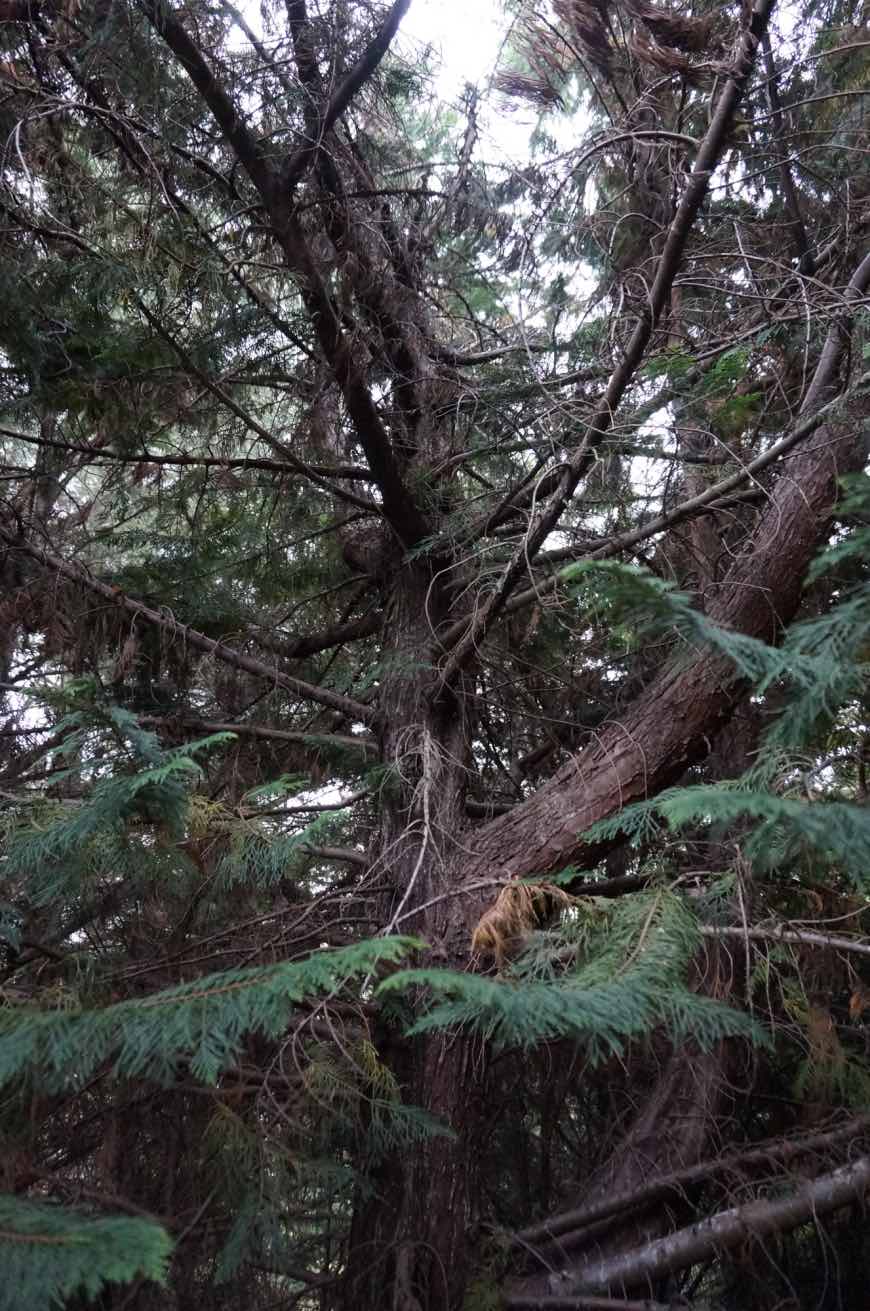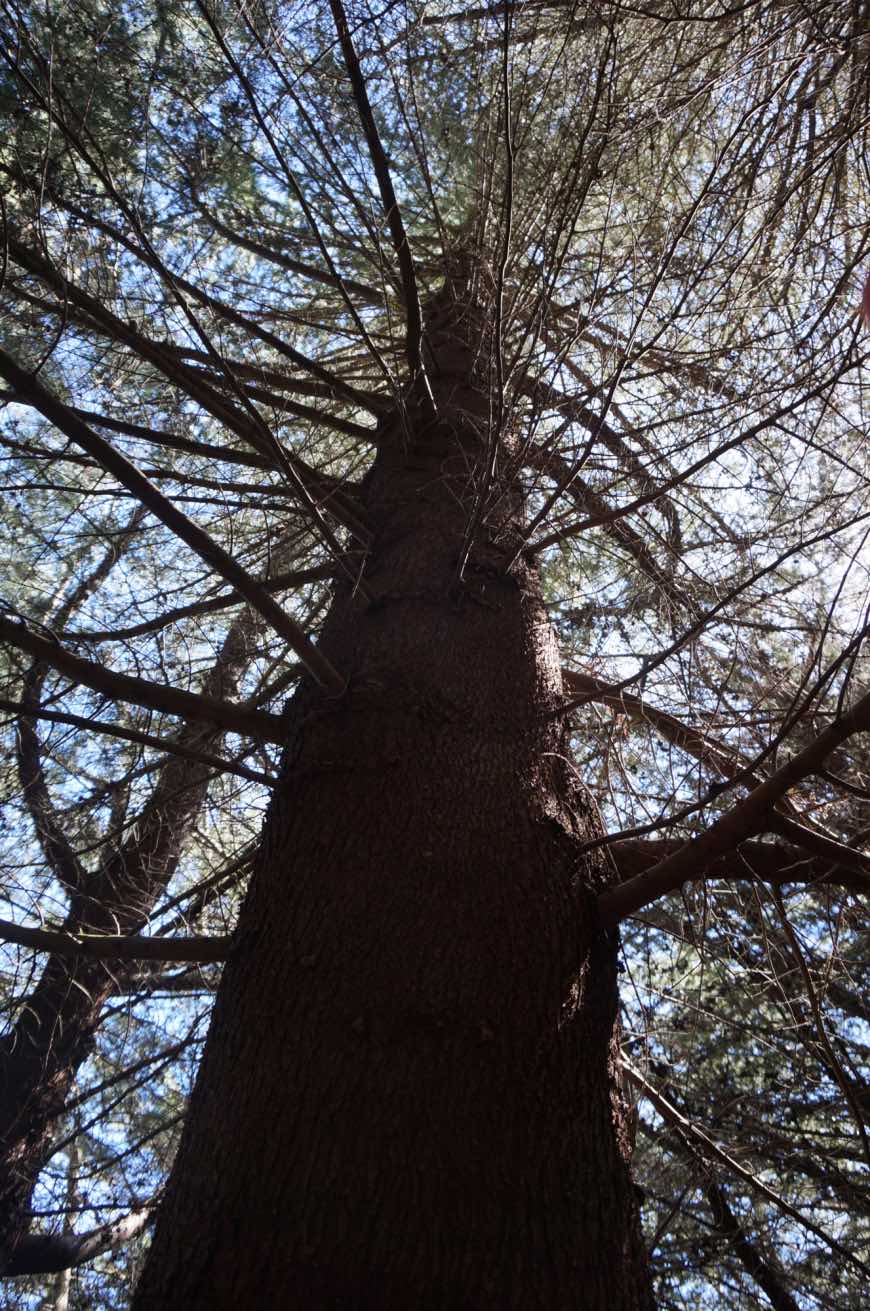Towards Commercialising Cypress as a High-Value Plantation Forest Species
Report Date: March 2017
Author: Dean Satchell, Sustainable Forest Solutions, R.D. 1 Kerikeri, Northland 0294
+64 21 2357554
dsatch@gmail.com
In memory of Allan Levett, cypress enthusiast and advocate for undertaking this research.
Special thanks and acknowledgement go to:
- MPI Sustainable Farming Fund
- Cypress Development Group (NZFFA)
- Marika Fritzsche
- Brian & Barbara Gibson
- Ben McNeil & family
- Andy & Tinks Pottinger
- Vaughan & Jude Kearns
- Angus Gordon
- Jeremy Thomson & Sashil Dayal
- Glenn Crickett & Catherine van Paassen
- Allan & Gail Laurie
- Neil & Pam Cullen
- John and Robyn Fairweather
- John Moore
- Charlie Low
- David Henley
Treegrower article
Introduction
Cypress species are well known in New Zealand for their timber, usually called "macrocarpa", this being a namesake for the species Cupressus macrocarpa. Macrocarpa and hybrids have been planted for shelter, shade and aesthetic values for well over 100 years, primarily because of easy establishment and good growth throughout New Zealand. Older plantation and shelterbelt trees have often proven to be very robust, growing into large trees free from disease, standing the test of time to eventually be the target of loggers and sawmills satisfying demand for the timber. The species achieved recognition in New Zealand because of the quality of the timber, which has a rich colour and lustre similar to Kauri, a traditional native appearance timber now in short supply.
Both price and demand for high quality cypress timber remains high, but issues with form, slow growth and disease levels that have resulted from growing unselected seedlots has progressively diminished grower confidence and interest in the species. Poor volumes of poor quality of logs mean little value to the grower. Overcoming these issues by deploying high quality clones to growers could transform the economics of cypress forestry.

Commercial proposition
For cypress to be a viable commercial forestry crop, trees need to be available that grow fast, grow straight, produce a high proportion of heartwood and be resistant to disease. All of these rolled into one tree, but also consistent between trees in the stand. Clonal forestry potentially offers all of the above via a single selection process.
One advantage with cypress over other commercial plantation conifers grown in New Zealand is that clones (cutting grown trees) can be selected that apparently do not suffer from physiological ageing. This means that continued propagation over time does not result in slower growth of propagules. The opportunity is for "one off" selection of superior clones for deployment that can continually be reproduced over time (as cuttings).
Clonal selection also offers the ability to test and select for desirable wood properties such as colour, heartwood content, durability level, density and strength.
However, the length of time a clone should be tested in field trials before it can be recommended for deployment is not well understood and currently open for enquiry. Early selection comes at a lower cost but entails greater risks once deployed. This is because some poor traits may not be expressed in immature trees. How long does it take for cypress to express undesirable traits?

The research
This research evaluated over 2500 trees from eleven clonal trials planted between 1994 and 1998, during late 2016. The primary purpose of the research was not to evaluate performance with the goal of making selections for deployment, but rather to evaluate relative performance and health for clones between different sites and geographical regions. Also of interest was identifying issues relevant to selection of clonal cypress tree stock.
Performance of the clones was assessed using a rating method and four performance criteria: tree size, tree form, stem health and foliar health.
Of interest to growers are three key performance and siting parameters relevant to selection of clones:
- Overall performance of each clone;
- Each clone's relative adaptability to different sites;
- How each site performed in general.
By evaluating each clone over a range of sites, it's adaptability to different sites can be assessed as relative performance between sites. The relative performance of all clones between sites can also be assessed. Furthermore, by evaluating each clone against the other clones across all sites, differences between clones and differences between sites are revealed.
Of particular interest was within-clone variability, both across sites but also within site. A good clone is consistently good. A clone that performs well in one site but not another should not be a candidate for deployment and would not be selected if properly trialed across a range of sites.
Each site has different issues such as level of wind, soil nutrition, soil drainage, soil moisture, rainfall, humidity and temperature, along with seasonal variations. These different variables might each affect all clones or individual clones in different ways. Climatic explanatory variables used in this research were seasonal rainfall and seasonal temperature.
Results
Although most of the clones in these trials performed very poorly, this outcome supported the reasoning that comparing relative performance between clones and sites was the intent for this research. Mediocre clones offer insight - hostile sites prove more challenging for mediocre clones than good clones and so the data reveals the challenging variables.
Both growth/form and stem/foliar disease were found to be strongly influenced by site. That is, relative performance of different clones differs significantly by site.
Temperature and rainfall both significantly influenced overall performance, diameter growth and tree health. Some clones proved to be more resilient than others to site or climatic factors. For example Ovensii proved to be healthy at all sites but growth & form was variable, especially in exposed South Island sites. Ferndown, on the other hand, had variable health on all sites and on average was healthy in cooler Bay of Plenty sites but not Northland, while growth & form scores were more variable than for Ovensii.

Dry conditions or cool conditions alone were insufficient to significantly reduce disease levels, but cool dry conditions consistently held low disease levels. The old adage that you can avoid canker by growing cypress in the South Island can be dismissed - canker was rife in some South Island locations but virtually absent in the central high country.
Some clones did perform well throughout all locations they were present in, illustrating the commercial potential for the species if high quality resilient clones were deployed to production forestry.
Conclusions
Very few if any of the clones evaluated from these historical trials are suitable for deployment as the one "silver bullet" for growers. The clones were mostly selected on early growth and form and some were selected from single trees based on their performance in one site. We now have insight and can conclude that early selection must be avoided. We can also conclude that selections could still be made from single trees, provided the propagules were thoroughly tested before considering for deployment. The two BHYB (Barr Hybrid) clones showed promise by growing into very good trees across a range of sites (resilience), whereas other clones such as PS did sometimes perform well, but in few sites (not resilient). Clonal trials over a wide range of sites reveal the very best, most resilient clones. Identifying such adaptability must precede deployment. The most promising clones in these trials are the two Neil Barr hybrids (BHYB1 & BHYB2), but unfortunately these were not planted across the full range of sites.

A key outcome from this research is that evaluating performance of clones for selection requires sufficient tree maturity for adequate expression of traits, both good and bad. A good-looking lightly branched young tree may become heavily branched and fluted on maturity, such as the NZR clone. In addition to growth, form and disease resistance, selection criteria recommended for clonal selection programmes includes light branch structure at maturity, low levels of fluting, a low incidence of stem breakages, resistance to toppling and possibly even resilience to low nutrient status in soil. Based on observations undertaken in the course of this research, in the authors opinion the length of time required for trialing clones across a wide range of sites before claiming resilience should be no less than a decade and ideally would be fifteen years.
Most importantly, what these historical trials do offer are lessons for applying to future selection and trial work and research questions that could form the direction for future work. All too often we look forward without looking back, but with the time frames involved in growing trees, any insight from what was done some time ago has got to be a good thing.

 Farm Forestry New Zealand
Farm Forestry New Zealand

